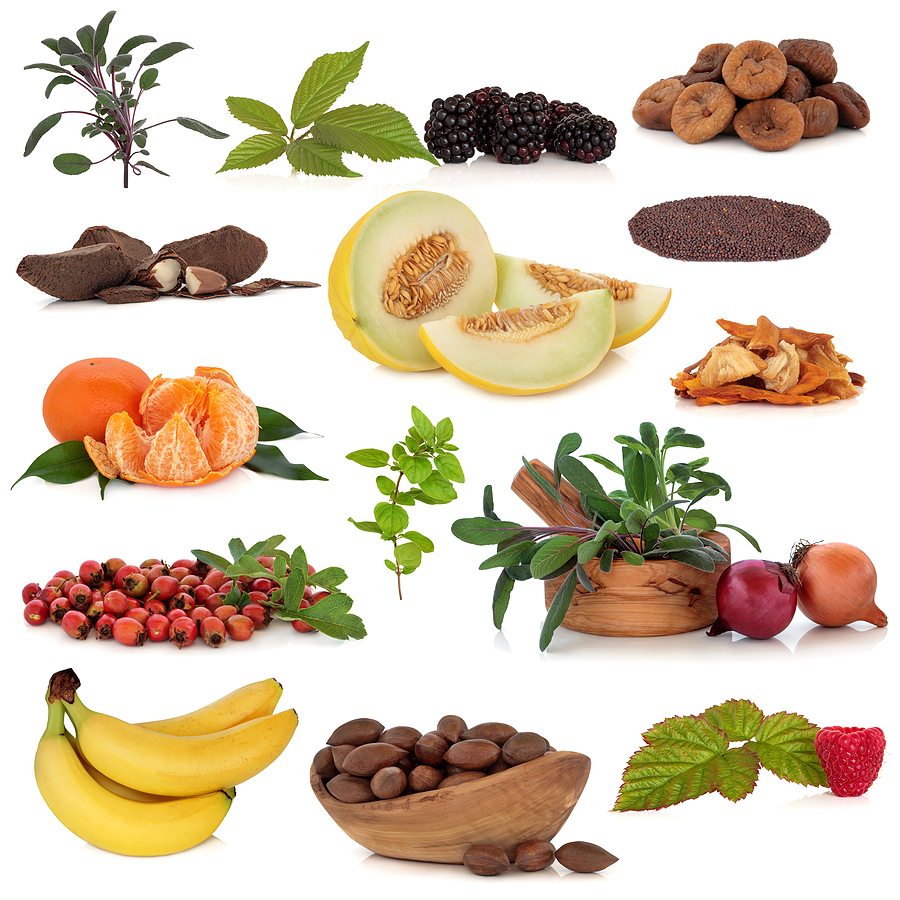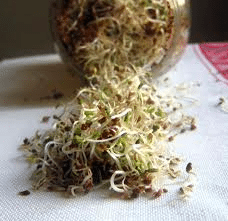
by Coach Scott | May 6, 2013 | Blog, Health, Nutrition, Supplements, Uncategorized, Weight Loss, Wellness
The term “Superfood” is often misused, over-used or even misunderstood by many people. But generally most experts do agree that there are certain foods that are low caloric / high nutrient foods.
Superfoods typically contain superior sources of anti-oxidants, phytonutrients, vitamins, minerals and other essential life giving nutrients that other foods do not.
Superfoods can be found in various forms and locations. Unfortunately, most cannot be found in your local grocery stores or even farmers markets.
In the next few postings we will be discovering what superfoods are the best and which we choose to use.
In this first post we will be discussing what we call the daily basics. These superfoods or supplements are not normally considered superfoods but with them you will feel super!
The Daily Basics
Enzymes – Many nutrition experts call enzymes the ―spark‖ of life because they play a necessary role in virtually all of the biochemical activities that occur in the body. They are essential for digesting food, for metabolizing nutrients, for stimulating the brain, for providing cellular energy and for repairing tissues, organs and cells.
The functions of enzymes are so many and so diverse that it would be impossible to list all. But the easiest designation is that enzymes are often divided into two main groups: digestive enzymes and metabolic enzymes.
Digestive enzymes will be the focus for this discussion.
Digestive enzymes breakdown the foods you eat. They metabolize the nutrients like vitamins, minerals, phytochemicals enabling them so they can be absorbed into the bloodstream for use in multiple bodily functions.
While the body does manufacture a supply of enzymes, it can and does also obtain enzymes from the fruits and vegetables you eat. Unfortunately enzymes are sensitive to heat and most will denature at temperatures between 102 and 115 degrees. Therefore, maintaining a temperature at or below 100 degrees, or consuming raw foods yields the highest and most benefit from the enzymes.
Taking enzyme supplements before every cooked meal will greatly improve your nutritional absorption rate of cooked foods. And taking enzymes after a raw meal will greatly improve your absorption rate of living foods.
For the best benefit, any enzyme supplements you chose should contain all of the major enzyme groups to include amylase, protease and lipase.
For even better digestion also use the following items on an as-needed basis: apple cider vinegar, HCl pills to quickly strengthen weak stomach acid, Celtic sea salt and at night take probiotics.
Probiotics – In a healthy state, the body has a higher concentration of good bacteria than bad, or disease-causing, bacteria.
But most of us do not live in a healthy state. Instead the human body has become full of bacteria-destroying elements called antibiotics. Antibiotics kill both good and bad bacteria alike. These nasty little things are in many of the foods you eat; milk, fish, meat and anything else that big farms raised. Animals that are raised in crowded conditions and live in close proximity to each other, contract and share diseases with each other. To combat sickness, farmers administer massive amounts of antibiotics to livestock. When meat or milk products are consumed, these antibiotics persist and are transferred to you. These antibiotics deplete your bacteria levels and drain your immune system leaving you vulnerable to infection.
Research on probiotics is fascinating. In short, probiotics are the best line of defense your body has to defend itself from infection. Most people do not realize it but the ―gut‖ carries as much as 70% of your immune system. And in your gut sits millions if not billions of bacteria. These bacteria keep us healthy and aid in many other functions. Probiotics are good bacteria and should remain in high levels in your gut. I recommend consuming natural and supplemental probiotics on a daily basis!
Good bacteria can be obtained through two sources. The first is direct from the Earth. As children, we play in the dirt and bacteria invades the body. Yes, some of the bacteria sources are harmful but much of the soil based bacteria is beneficial. But in this clean world of antiviral soaps and cleaners and most of us no longer working outdoors I fear we have lost touch with nature. This departure from nature, coupled with the bacteria killing cleaners moves us farther and farther away from good bacteria and good health.
The second way to obtain good bacteria is to purchase probiotic supplements. There are many on the market. Look for the highest probiotic count possible when purchasing these supplements. Probiotics that utilize ―soil based organisms‖ are better and stronger.
I suggest you ingest ample amounts of probiotics every day and go outside every now and again and walk barefoot through the dirt and grass (watch out for the dog poo). You will be much happier and healthier for it.
Essential Fatty Acids – All fats are not created equally. PERIOD.
Essential Fatty Acids (EFA’s) are fats that the body cannot produce on its own and are available through one of two sources: 1) Plant sources like Flax, Borage, Primrose, Hemp, Chia and other plants. 2) Fish, specifically deep sea fish like mackerel, salmon and krill.
EFAs remain liquid at room temp and stay liquid in your body. EFA’s help tremendously with many bodily functions such as, but certainly not limited to, hair growth, digestion, cell repair, cell detoxing, skin repair and growth, proper brain functions, stabilizing blood sugar levels, keeping proper HDL/LDL levels in balance and much more!
The primary function of essential fats is to coat and protect your cell walls. Your cell walls are susceptible to damage without this protective barrier.
I recommend that you put a little research into this subject and you will be the better for it. I highlight a few other facts about EFA’s later in the book but please note that this is yet another substance the body requires daily.
Green leafy vegetables – Green leafy vegetables are the rock stars of the plant kingdom. They are highly nutritious and readily available. But if you are American then you probably do not eat enough of them.
Fresh, raw, green, leafy vegetables contain high doses of chlorophyll, easily digestible proteins, enzymes and a wide range of phytonutrients, vitamins and minerals. These particular vegetables also act as a health tonic for the brain and immune system and a cleanser of the kidneys.
Leafy greens are denser in nutrients than other vegetables and contain awesome amounts of calcium.
Leafy greens should definitely be a large part of your daily diet!

by Coach Scott | Feb 19, 2013 | Blog, EatFadiFoods Recipes, Health, Nutrition, Uncategorized, Weight Loss, Wellness
Ahhh cheese. Loved by many addicted by a few and an opiate for all. Cheese of course is not the healthiest of foods but it is delicious. Be thankful if you have a lactose intolerance that keeps you away from this tasty yet fattening and artery clogging delight.
Now don’t fret because raw food enthusiast have found out how to closely duplicate the taste of many cheese recipes
While there is no substitute for the real deal, I have come to love the following recipes in my home.
Raw Nut Cheese
- 2 cups raw cashews soaked in filtered water for 2 – 4 hours
- 1/4 cup – 1/2 cup filtered water as needed for desired consistency
- 1/4 cup freshly squeezed lemon juice
- 1/2 cup nutritional yeast
- 2 to 4 heaping tbsp probiotics
- 1 tsp Celtic sea salt
- Place the cashews, 1/2 of the water, 1/2 of the lemon juice, and sea salt in the food processor and pulse until roughly blended.
- Gradually add in more lemon juice, and salt to taste.
For best results allow the cheese to age by draining the liquid through a cheese cloth at room temp for at least 24 to 48 hours
Storing cashews in the refrigerator for longer periods will firm the cheese.
Place cheese in a dehydrator for 24 hours to create a hardened outer rind.
For a different flavor omit the nutritional yeast (unless noted below) and 1/2 of the lemon juice from the basic recipe and try adding and making:
Garlic cheese:
- 4 cloves garlic
- ¼ cup nutritional yeast
Herb cheese:
- 1 chopped green onion
- 1 Tbsp chopped fresh flat leaf parsley
- 1 Tbsp chopped fresh basil
- 1 Tbsp chopped fresh thyme
- 2 Tbsp nutritional yeast flakes
- 2 to 4 heaping tbsp probiotics
Tomato basil cheese:
- 1 tsp organic tomato paste
- 2 cloves fresh garlic
- 4 Tbsp chopped fresh basil
- 2 to 4 heaping tbsp probiotics
Chilli chive cheese:
- 1 – 2 Tbsp Chopped Chives
- 1/4 cup nutritional yeast flakes
- 2 to 4 heaping tbsp probiotics
Chilli cheese:
- 1 – 2 Tbsp chopped fresh cilantro
- a pinch of red chilli flakes or chopped fresh chilli
- 2 to 4 heaping tbsp probiotics
or
- 1 – 2 Tbsp freshly chopped fresh flat parsley
- 2 chopped green onions
- 1 Tbsp grated lemon zest
- 1/2 tsp ground chipotle or 1/2 finely chopped jalapeno pepper or 1 serrano chilli
- 2 to 4 heaping tbsp probiotics
Sweet cheese:
- 1/4 cup nutritional yeast
- 1 tsp raw agave nectar
- 2 to 4 heaping tbsp probiotics
Truffle cheese:
- 2 tsp truffle oil
- freshly ground pepper
- 2 to 4 heaping tbsp probiotics
Sesame cheese:
- 2 Tbsp sesame oil
- 1 Tbsp tahini paste
- 2 to 4 heaping tbsp probiotics

by Coach Scott | Feb 16, 2013 | Blog, EatFadiFoods Recipes, Health, Nutrition, Weight Loss, Wellness
Sprouting For Health can be one of the funnest cooking journeys you can take! In the kitchen there is not much better than watching a seed sprout under your care. And the best part is the tasy treats you will enjoy after the sprouting occurs.
Sprouts contain all elements a plant needs for life and growth. These same elements are in large part what your body needs to repair and rebuild those 60 trillion cells that split inside of you on a daily basis. When you sprout your seeds they germinate. Germination converts starch to simple sugar, causes fat to break down into life giving EFAs, minerals merge with protein thus increasing digestible nutrient content and proteins become predigested amino acids. Research shows that sprouts contain one of the highest rated vitamin and mineral content. www.livingonhighspeed.com
Among their other virtues sprouted seeds are low in cost, can be stored indefinitely, are easy to grow, and when sprouted increase their nutritional value many times.
Sprouts are best when eaten raw. You can eat the entire sprout, including leaves and roots. Sprouts can be eaten by themselves, be added to salads, sandwiches, soups, blended for smoothies, baby food, sauces, and dressings. They can be stored for up to two weeks if refrigerated.
Other Attributes Of Sprouting
Sprouts are a powerful source of antioxidants in the form of vitamins, minerals and enzymes which assist in protecting the body from free radical damage.
Sprouts are alkaline.
Sprouts are full of living enzymes.
Sprouts can be grown in your kitchen.
Sprouts are a good source of essential fatty acids (EFA).
Sprouts are high in fiber.
Sprouts have a massive supply of vitamins. Research suggest that the vitamin content of some seeds can increase from 100% to 2000% in several days of sprouting.
Sprouts are high in minerals. During sprouting, the minerals are enriched and chelation occurs making these minerals easier to be absorbed in your body.
Sprouts can be grown all year round to give a constant supply of food in the very freshest form possible.
Sprouts provide a good source of protein. Sprouts take less time to digest than meat, sprouts are living food – meat is lifeless, sprouts are alkaline – meat is acidic, sprouts can cut the cost of living – meat is a highly priced, sprouts have no additives – meat may have hormones and chemicals from farming practices, sprouts have zero cholesterol.
Sprouts are low in calories.
Sprouts have a low glycemic index.
Sprouts are awesome nutrient-dense foods.
How to Sprout
SEEDS
– Soak about one to two tablespoonfuls (seeds will expand about eight times the original amount) in a large glass jar. Fill the jar half-way with tepid water and cover it with something that breathes like cheese-cloth. Secure the cloth with a rubber band. Place in a dark area at about room temperature for about five hours. After five hours, drain, rinse, and let the seeds stand without water for about eight to twelve hours. Rinse again and drain well to prevent rotting. For the next six days the seeds should be rinsed and drained twice a day using lukewarm water. They should be kept at room temperature in a dark place. After the sixth day, place them in the light for one more day to increase their chlorophyll content.
GRAINS
– Preparation is the same as for seeds.
LEGUMES
– Due to their hardness, legumes and beans can require an initial soaking of about fifteen hours. They should be rinsed twice a day and given three days for adequate sprouting. Legume expansion is not so great as in the case of seeds and grains.

by Coach Scott | Feb 16, 2013 | Blog, EatFadiFoods Recipes, Health, Nutrition, Wellness
Ahh… Hummus, loved by many yet elusive to many more. If you watched Don’t Mess With the Zohan then you know that hummus has many, many applications. While hummus is naturally a healthy snack, we have found a easy way to make this amazing treat even healthier and the simple answer is to sprout your chickpeas.
Sprouting is one of the top ten healthiest choices you can make to start your wellness journey.
Sprouts provide a good source of protein. Sprouts take less time to digest than meat. Sprouts are living food, meat is lifeless. Sprouts are alkaline, meat is acidic. Sprouts can reduce grocery cost, meat is a highly priced. Sprouts have no additives, meat may have hormones and chemicals. Sprouts have zero cholesterol.
See our next posting on How To Sprout – Now on to this delicious and quick recipe.
Sprouted Red Pepper and Garlic Hummus
- 30 oz soaked and sprouted chickpeas
- ½ to ¾ cup pure water
- 3 oz sundried tomatoes
- 1 peeled lemon
- 1 cup sesame seeds
- 1 to 2 tbsp oil (i use sesame seed oil)
- 1 tsp salt
- 4 to 8 large garlic cloves
Place all items into a high speed blender place on high a spin until smooth. Enjoy…..
More about Coach Scott Black can be found on the Body By Fadi site at this link: https://bodybyfadi.com/coach-scott.html
Most of the recipes covered in this new series will be derived from Coach Scott’s book Living On High Speed. https://www.createspace.com/3631985






